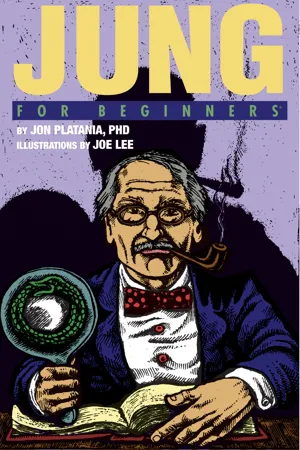
- 160 pages
- English
- ePUB (mobile friendly)
- Available on iOS & Android
eBook - ePub
Jung For Beginners
About this book
Carl Gustav Jung merged Eastern mysticism with Western psychology, brought scientific respectability to religion, laid the foundation for ‘the New Age,’ and is second only to Freud in influence and importance in the world of psychoanalysis. Many consider him a genius, but many others disagree.
Scholar and clinical psychologist Jon Platania, PhD, presents Jung as a somewhat opportunistic and dissociated character whose most famous historical events were his break with Freud and his questionable sojourn with the psychological elite of the German Third Reich. On the other side of Jung's complex genius, there is a deeply spiritual man who laid the groundwork for a more optimistic approach to our modern understanding of the human psyche in both theology and psychology. He is remembered by many as the "Swiss Doctor of the Soul".
Dr. Platania then takes us on a tour of the work that made Jung one of the pillars of modern psychology. And what a body of work it is. Jung’s open-mindedness was astonishing. Wherever he went—Calcutta, Egypt, Palestine, Kenya—Jung learned something that expanded his views. His open-ended psychology incorporated Yoga, meditation, prayer, alchemy, mythology, astrology, numerology, the I Ching—even flying saucers! He taught us that psychology and religion can not only coexist peacefully together, but that they can enhance us, inspire us, and help us complete ourselves.
Freud, for all of his brilliance, reduced us to little more than vessels of hormones with high IQs. Jung, for all of his flaws, gave us back our souls.
Scholar and clinical psychologist Jon Platania, PhD, presents Jung as a somewhat opportunistic and dissociated character whose most famous historical events were his break with Freud and his questionable sojourn with the psychological elite of the German Third Reich. On the other side of Jung's complex genius, there is a deeply spiritual man who laid the groundwork for a more optimistic approach to our modern understanding of the human psyche in both theology and psychology. He is remembered by many as the "Swiss Doctor of the Soul".
Dr. Platania then takes us on a tour of the work that made Jung one of the pillars of modern psychology. And what a body of work it is. Jung’s open-mindedness was astonishing. Wherever he went—Calcutta, Egypt, Palestine, Kenya—Jung learned something that expanded his views. His open-ended psychology incorporated Yoga, meditation, prayer, alchemy, mythology, astrology, numerology, the I Ching—even flying saucers! He taught us that psychology and religion can not only coexist peacefully together, but that they can enhance us, inspire us, and help us complete ourselves.
Freud, for all of his brilliance, reduced us to little more than vessels of hormones with high IQs. Jung, for all of his flaws, gave us back our souls.
Frequently asked questions
Yes, you can cancel anytime from the Subscription tab in your account settings on the Perlego website. Your subscription will stay active until the end of your current billing period. Learn how to cancel your subscription.
No, books cannot be downloaded as external files, such as PDFs, for use outside of Perlego. However, you can download books within the Perlego app for offline reading on mobile or tablet. Learn more here.
Perlego offers two plans: Essential and Complete
- Essential is ideal for learners and professionals who enjoy exploring a wide range of subjects. Access the Essential Library with 800,000+ trusted titles and best-sellers across business, personal growth, and the humanities. Includes unlimited reading time and Standard Read Aloud voice.
- Complete: Perfect for advanced learners and researchers needing full, unrestricted access. Unlock 1.4M+ books across hundreds of subjects, including academic and specialized titles. The Complete Plan also includes advanced features like Premium Read Aloud and Research Assistant.
We are an online textbook subscription service, where you can get access to an entire online library for less than the price of a single book per month. With over 1 million books across 1000+ topics, we’ve got you covered! Learn more here.
Look out for the read-aloud symbol on your next book to see if you can listen to it. The read-aloud tool reads text aloud for you, highlighting the text as it is being read. You can pause it, speed it up and slow it down. Learn more here.
Yes! You can use the Perlego app on both iOS or Android devices to read anytime, anywhere — even offline. Perfect for commutes or when you’re on the go.
Please note we cannot support devices running on iOS 13 and Android 7 or earlier. Learn more about using the app.
Please note we cannot support devices running on iOS 13 and Android 7 or earlier. Learn more about using the app.
Yes, you can access Jung For Beginners by Jon Plantania,Joe Lee in PDF and/or ePUB format, as well as other popular books in Psychology & Jungian Psychology. We have over one million books available in our catalogue for you to explore.
Information
JUNG: The work
Most books on Jung deal with his Nazi period by either ignoring it, minimizing it, or tucking it away neatly in an Appendix. The author of this book finds Jung’s Nazism too hideous to ignore, too enormous to minimize, and too reprehensible to bury in an Appendix. So I have begun this book by showing Jung at his worst.
Now, with that behind us (or hovering over us), let us take a look at the work that has made Jung one of the two pillars of modern psychiatry. Jung almost singlehandedly gave scientific respectability to Religion and Myth, to Intuition and Spirituality, to God and the gods. Freud, for all his brilliance, shrunk us until we were nothing but genitals with high I.Q.s. Jung, for all his flaws, gave us back our Souls.
JUNG: The work
Most books on Jung deal with his Nazi period by either ignoring it, minimizing it, or tucking it away neatly in an Appendix. The author of this book finds Jung’s Nazism too hideous to ignore, too enormous to minimize, and too reprehensible to bury in an Appendix. So I have begun this book by showing Jung at his worst.
Now, with that behind us (or hovering over us), let us take a look at the work that has made Jung one of the two pillars of modern psychiatry. Jung almost singlehandedly gave scientific respectability to Religion and Myth, to Intuition and Spirituality, to God and the gods. Freud, for all his brilliance, shrunk us until we were nothing but genitals with high I.Q.s. Jung, for all his flaws, gave us back our Souls.
The Foundations of Jungian psychology

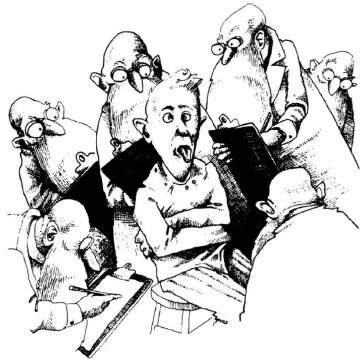
Jung paid tribute throughout his long life to the importance of psychoanalysis in the scientific and therapeutic fields. He understood the nature of the psychodynamic method. He fully grasped the importance of transference in which the patient’s perceptions of the therapist are distorted by the patient’s external and internal experience most of which was motivated by powerful unconscious forces no longer available to conscious awareness.
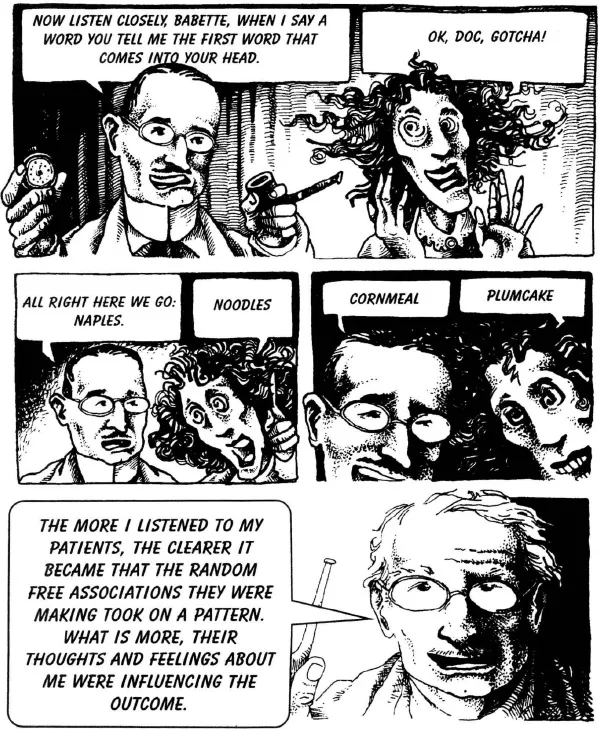
But in spite of the similarities in their initial approach, Jung came to differ radically from Freud. The conflicts that separated them were serious and fundamental, especially regarding the relative importance of infantile sexuality and the psychology of religion. At the fourth International Psychoanalytic Congress in Munich, Jung had designated his own psychology as Analytic Psychology. One year later, Jung and his Zurich colleagues resigned from the International Psychoanalytic Association.
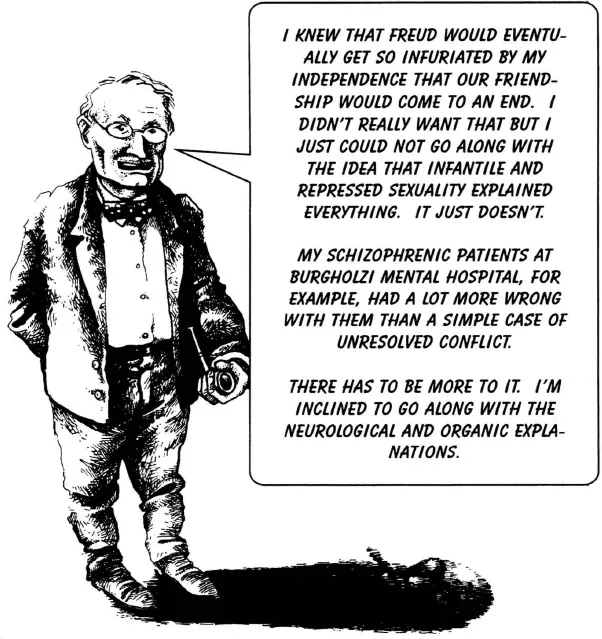
In most cases of psychosis the patient loses all sense of reality. The illness is so extreme that it has to involve the loss of other instinctual functions as well as the sex drive. But Freud would have us all maintain that reality is a function of sex. Clearly, the Libido that drives the engine of what makes us who we are must be redefined!
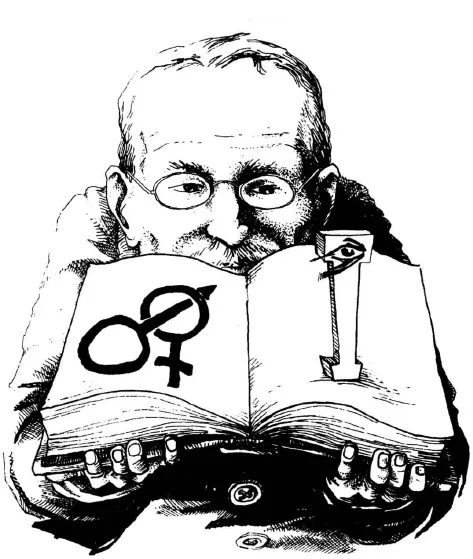
Some fourteen years would pass until 1928 when Jung, age 53, would publish his definitive volume, Two Essays on Analytic Psychology. Here he described his controversial conclusions. He discussed at some length how two different interpretations might be made of the same material; the sexual interpretation identified with Psychoanalysis, and the ego interpretation identified with individual psychology. He considered psychoanalysis to be “Extroverted” and analytic psychology to be “Introverted.” At the time, the distinctions between the various schools of analytic thought had not yet received the benefit of the “Ego Psychologists.”
Jung came to believe that both the analytic method and the educative method were particularly relevant to those patients who were in the “first half of life.” But there was more that could be done for the patient in whom Jung was most interested, those who had entered the “second half of life.”

The Structure of the Psyche

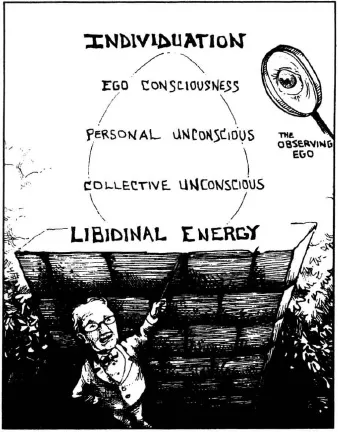
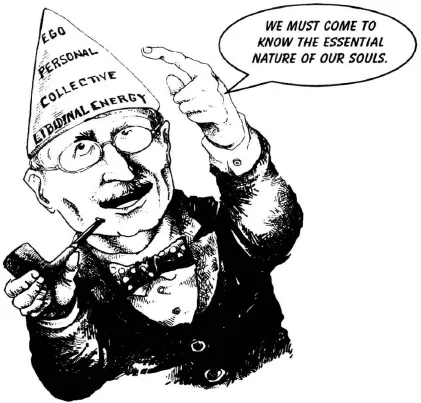
This illustration should be envisioned as a kind of three-dimensional cone rather than a flat pyramid. The very top represents the “conscious ego” or the immediate knower of what is going on as we come to understand it through the senses. This is a relatively small part of the experience of being and includes all of those aspects of reality that are available to immediate recall: memories, knowledge of facts, pl...
Table of contents
- Coverpage
- Copyright
- Dedication
- Contents
- Titlepage
- Jung, The Life
- Jung, The Work
- Appendix